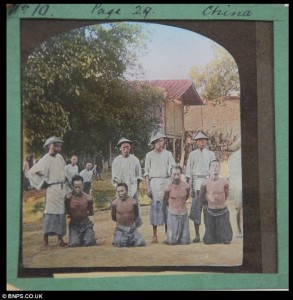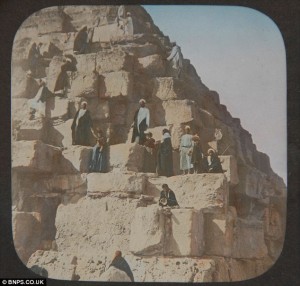Henry Harrison was the paymaster-general of the British Royal Navy at the end of the 19th c. He traveled the world, taking copious pictures and biological specimens.
He was also an artist, so he adroitly colored all of his slides while he was still on the spot, coming amazingly close to photorealism for the era.
Hell, even for this era. My parents have plenty of colorized pictures from their childhood with excessively pink cheeks and glaringly yellow hair.
In addition to the collection of magic lantern slides, he left detailed notes of his subjects. He travelled from Egypt to the South Pacific, taking in most of the important ports of call along the way. The photographs include graphic images of the punishment meted out by the Chinese authorities in the early years of the Boxer Uprising.
Photographs show captured rebels in tiny crates, awaiting execution, and the aftermath of mass beheadings.
Related LinksOther locations include the Pyramids, India, Venice, Pompeii, Tonga and the West Indies. One of the slides is labelled: “An English party ascending the Great Pyramid.”
The Boxer Rebellion pictures are dated 1895, which is 3 years before the generally agreed upon beginning date of the revolt.
I’m not sure if the label is Henry Harrison’s or something the appraisers have determined. If it’s the latter, that’s something quite notable. Not only are these never before seen images of the repression, but they’re well in advance of what we might expect to see.
His large collection slides and specimens have remained in the family all this time. Now his granddaughter-in-law is selling 30 of the slides, the paints he used to color them and his notes on how to color in the photographs.
The catalogue will be online on the auctioneers’ website a week before the October 1st sale.

